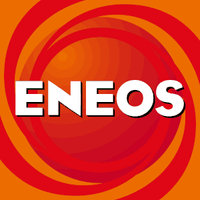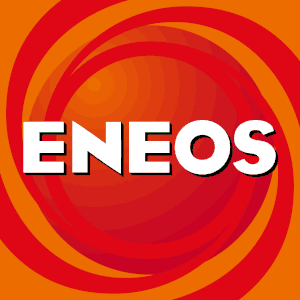
ENEOS Holdings Inc
TSE:5020


Utilize notes to systematically review your investment decisions. By reflecting on past outcomes, you can discern effective strategies and identify those that underperformed. This continuous feedback loop enables you to adapt and refine your approach, optimizing for future success.
Each note serves as a learning point, offering insights into your decision-making processes. Over time, you'll accumulate a personalized database of knowledge, enhancing your ability to make informed decisions quickly and effectively.
With a comprehensive record of your investment history at your fingertips, you can compare current opportunities against past experiences. This not only bolsters your confidence but also ensures that each decision is grounded in a well-documented rationale.
Do you really want to delete this note?
This action cannot be undone.

| 52 Week Range |
550.9
856.5
|
| Price Target |
|
We'll email you a reminder when the closing price reaches JPY.
Choose the stock you wish to monitor with a price alert.
This alert will be permanently deleted.
 ENEOS Holdings Inc
ENEOS Holdings Inc
Earnings Call Analysis
 Q1-2025 Analysis
ENEOS Holdings Inc
Q1-2025 Analysis
ENEOS Holdings Inc
Soichiro Tanaka of the ENEOS Group expressed gratitude to shareholders and investors for their continued support and provided a summary of the financial results for the first quarter of the fiscal year 2024.
The company's operating income, excluding inventory valuation, stood at JPY 113.1 billion, with net income at JPY 55.2 billion. This represents a slight decrease year-on-year mainly due to the absence of one-off profits from the previous year.
The company faced issues with refinery operations but implemented measures to reduce problems, staying below their target for the year. They continue to focus on safe and stable operations and maintain their forecast of JPY 400 billion in operating income for the full year.
ENEOS Group is actively reviewing its assets and businesses to optimize capital structure and reduce costs. They plan to sell additional stakes in their Caserones copper mine and other parts of their Marine Logistics business, completing by April 2025. They also aim to buy back shares totaling JPY 250 billion, with JPY 49 billion already purchased in Q1.
Despite the steady Dubai crude price averaging $85 per barrel, ENEOS faced challenges with fluctuating copper prices and a depreciating yen. This impacted their operations and margins across different segments.
Revenue from petroleum products saw a slight decrease to JPY 39.9 billion due to refinery maintenance and export market weakness. High-Performance Materials increased to JPY 6.6 billion while electricity sales rose significantly to JPY 9.3 billion. Renewable energy revenues dropped slightly due to poor sunlight and wind conditions.
Operating income from oil and natural gas exploration decreased year-on-year to JPY 22.8 billion due to foreign exchange impacts and other factors. Metals' income also declined significantly to JPY 24.9 billion, despite higher sales in semiconductor and ICT materials.
The company generated JPY 113.1 billion from operating activities but faced cash outflows due to various expenditures. Their free cash flow was negative at JPY 63.2 billion, and overall net cash flow, including dividends and share buybacks, was a negative JPY 162 billion. Their net interest-bearing debt is now JPY 2.142 trillion with a debt-to-equity ratio of 0.49x.
ENEOS Group remains focused on optimizing their operations and balance sheet while dealing with market fluctuations and operational challenges. They hold on to their yearly revenue forecast while strategically divesting some assets and buying back shares to improve capital efficiency.


 You don't have any saved screeners yet
You don't have any saved screeners yet

I'm Soichiro Tanaka. We'd like to express our sincere gratitude to our shareholders and investors for your continued support and advice regarding the business activities of the ENEOS Group.
Let me dive into the FY 2024 first quarter financial results according to the materials. Please turn to Slide 3 for financial results highlights. Actual operating income, excluding inventory valuation for Q1 fiscal 2024 was JPY 113.1 billion. And net income, excluding inventory valuation, was JPY 55.2 billion.
A slight year-on-year decrease in profit was due to the disappearance of the one-off profit associated with the sales of Caserones recorded last year in the Metals business. And excluding this, results were generally flat year-on-year. Regarding refinery troubles, efforts such as accelerating inspections and strengthening operational management were effective.
And in Q1, we were below our 4% UCL target for fiscal 2024. We will continue to focus on reducing refinery troubles and ensuring safe and stable operations. At the bottom of the slide, we have decided to keep the previous full year forecast announced in May.
Operating income, excluding inventory valuation, is generally on track to achieve the full year forecast of JPY 400 billion. Please turn to Slide 5. We have been reviewing our assets and businesses based on asset efficiency, pursuing optimal capital structure, reducing capital costs and comprehensively optimizing our balance sheet. We are further accelerating our efforts since fiscal 2023.
As stated at the bottom left, during Q1, we decided to make an additional sale of our stake in the Caserones copper mine. In the Metals business, we'll focus our management resources on the semiconductor materials field, where demand is expected to increase in the future.
In the Petroleum Product business, as announced in our press release in July, we have decided to sell the businesses other than crude oil tankers of ENEOS Ocean Corporation Limited, which handles our group's Marine Logistics business. The target businesses are LPG carriers and chemical tankers. And OCL is scheduled to be completed in April 2025.
In light of the harsh environment surrounding the Marine Logistics business in recent years, we have decided that operating the business under the best owner who could develop a growth strategy in the global shipping sector would be optimal for the target business, and by extension, for the group.
Additionally, we plan to buy back our shares for a cumulative total of JPY 250 billion from fiscal 2023 to 2024 and, 20% of which JPY 49 billion, was acquired in Q1. We'll continue to aim to improve asset efficiency and capital efficiency by further promoting balance sheet management.
Please turn to Slide 7. Dubai crude oil price shown by the red line, started at $88 per barrel at the beginning of the quarter and remain around $85 per barrel towards the end, following the announcement of OPEC Plus' plan to gradually reduce voluntary production cuts. The quarter average was $85, up by $7 year-on-year.
The yellow LME copper price started at $4.05 per pound at the beginning of the quarter, rising to $4.92 per pound in May, the highest on record due to reports of Chinese smelters agreeing to production cuts and increasing supply risks due to Russian metal trade regulations.
Therefore, the price remained at around $4.30 through the quarter, and the quarter average was $4.42, up by $0.57 year-on-year. As for the exchange rate, yen depreciated due to the widening interest rate gap between Japan and the United States and the quarter average was JPY 156, JPY 19 weaker year-on-year.
Next, please look at Slide 8. The Petroleum Product margin index has remained steady, improving by just under JPY 5 year-on-year, including the time line impact. The PX margin index has worsened slightly year-on-year due to flat supply and demand caused by the increased PX production as overseas gasoline market conditions weakened. Pages 10 and 11 show a summary of Q1 results and operating income by segment. Let me keep them as an overlap with explanation at the beginning and a waterfall charts from the next pages.
Please turn to Slide 12. Operating income for petroleum products, excluding inventory valuation, was JPY 39.9 billion and a year-on-year decrease of JPY 1.9 billion. The volume impact was negative JPY 3.2 billion due to regular maintenance at the Kawasaki refinery and weakened export market. JPY 1.3 billion increase in margins expenses had positive factors such as JPY 24 billion in petroleum products and export time line JPY 9 billion in real petroleum product margin, excluding time line, but more offset by negative factors, such as a temporary cost increase of JPY 16 billion due to accelerated inspections.
And acceptance inspections for regular repair work, a negative JPY 10 billion by depressed fuel efficiency due to rising crude oil prices and a negative JPY 4 billion in chemical product margins. Operating income for High-Performance Materials increased to JPY 6.6 billion year-on-year, up by JPY 4 billion due to increased sales of elastomers, improved margins due to the soaring butadiene market and weak yen normalized inventories in the high-performance materials supply chain and weak yen-driven margin improvement.
Please turn to Slide 13. Although sales volume decreased, operating income for electricity was JPY 9.3 billion, up by JPY 4.8 billion year-on-year, thanks to improved sales margins entry into the supply and demand adjustment market in the VPP business and a one-off gain by reviewing sales recording timing due to the spin-off.
Operating income for renewable energy decreased by JPY 500 million year-on-year due to worsened sunlight and wind conditions, equipment troubles and other factors despite an improvement by reviewing the service life of power plants.
Next, please turn to Slide 14. Operating income for oil and natural gas E&P was JPY 22.8 billion, down JPY 3.1 billion year-on-year. From the left, the sales volume was a positive JPY 6.2 billion, mainly due to the volume increase by the expansion project in Tangguh, Indonesia, and the resource prices was a negative JPY 300 million.
In addition, exchange expenses was a negative JPY 9 billion, which includes the one-off accounting impact associated with the acquisition of Japan Drilling in 2023. Operating income for metals decreased by JPY 15.2 billion year-on-year to JPY 24.9 billion.
Sales of semiconductor materials and ICT materials increased, mainly due to normalized inventories in the supply chain and profits increased year-on-year. Metals and recycling had positive factors such as weaker yen and higher copper prices, but profits decreased year-on-year, mainly due to the reversal of foreign exchange valuation gains recorded last year with Caserone sales.
Let me move on to the balance sheet and cash flow on Slide 15. Cash flow is on the right. Please look at the numbers excluding the lease impact in the dotted line. Operating cash flow for Q1 had JPY 113.1 billion from operating income, excluding inventory valuation and JPY 67.9 billion for depreciation expenses. But other was negative JPY 138.2 billion due to increased inventory for the winter, rising crude oil prices, corporate tax payments, et cetera, resulting in a cash flow of JPY 42.8 billion.
Investing cash flow was a cash outflow of JPY 106 billion resulting in free cash flow to be a cash outflow of JPY 63.2 billion. Net cash flow, including dividend payments and share buybacks was a cash outflow of JPY 162 billion. As shown in the balance sheet on the left, net interest-bearing debt, excluding cash on hand was [ JPY 2.142 trillion ], up by JPY 142.1 billion from the end of last year, and the net debt-to-equity ratio was 0.49x.
This concludes my explanation. Slide 17 onwards are for your reference, such as the assumptions and sensitivities. Please refer to them later. Thank you for your attention.